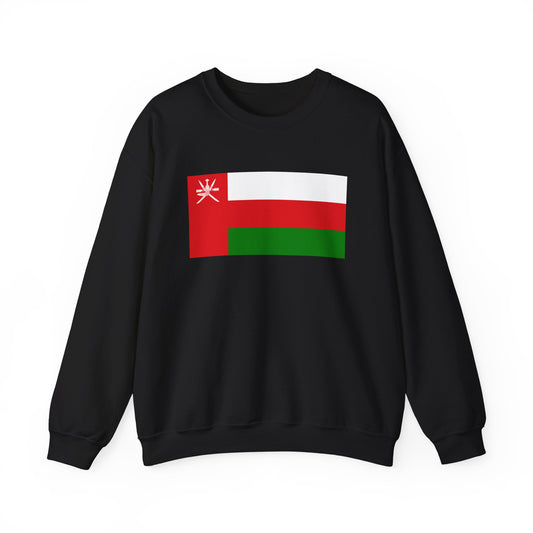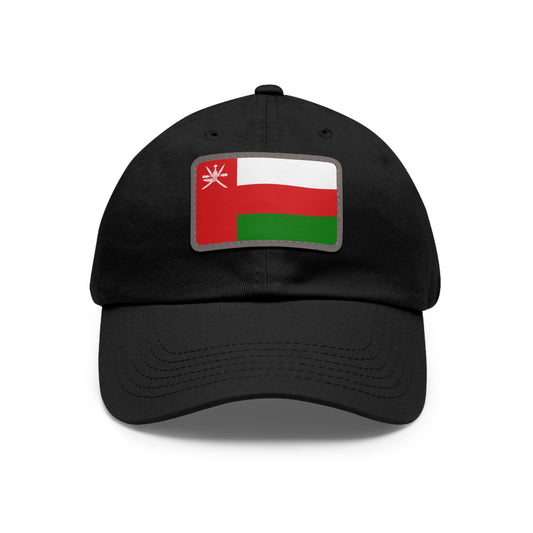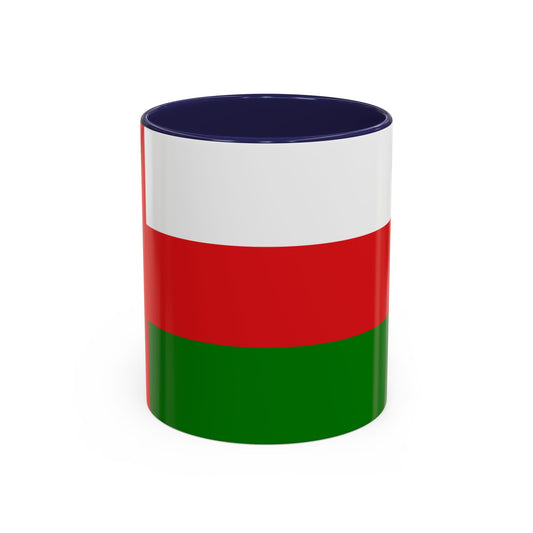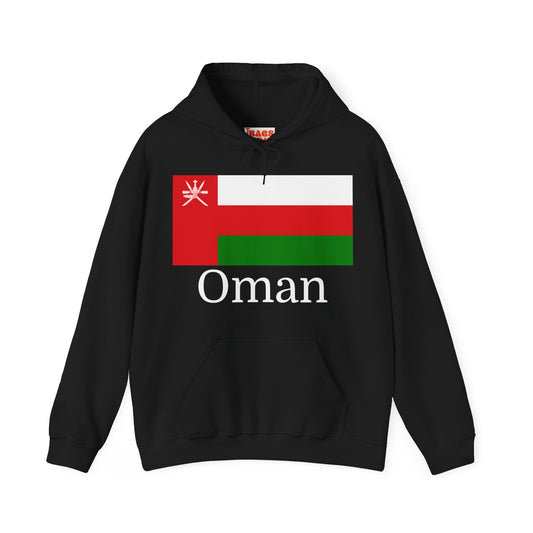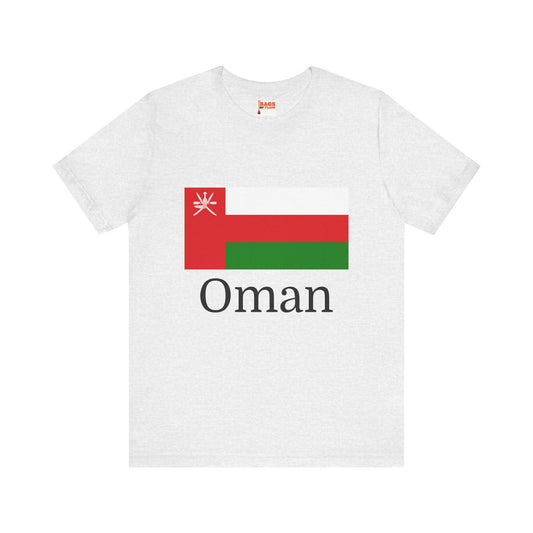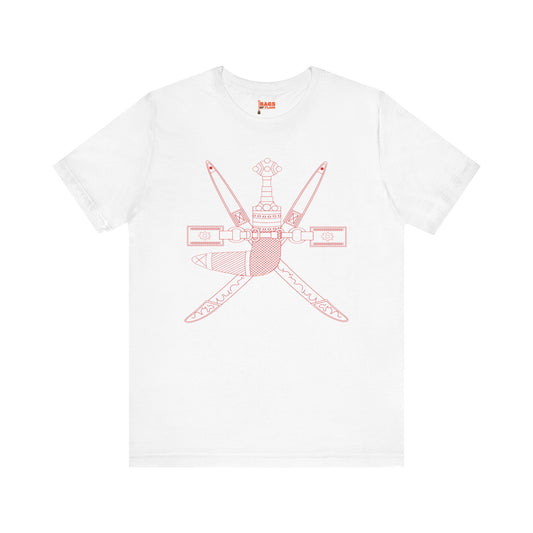-
Oman Sweatshirt
Regular price $34.15 USDRegular priceUnit price / per -
Oman Symbol Sweatshirt
Regular price $34.15 USDRegular priceUnit price / per -
Oman Flag Sweatshirt
Regular price $34.15 USDRegular priceUnit price / per -
Oman Pillow
Regular price $22.65 USDRegular priceUnit price / per -
Oman Leather Patch Hat
Regular price $18.85 USDRegular priceUnit price / per -
Oman Trucker Cap
Regular price $14.90 USDRegular priceUnit price / per -
Oman Hoodies
Regular price $34.40 USDRegular priceUnit price / per -
Oman T-shirts
Regular price $22.79 USDRegular priceUnit price / per -
Oman Symbol Hoodies
Regular price $34.40 USDRegular priceUnit price / per -
Oman Flag on Hoodie
Regular price $34.40 USDRegular priceUnit price / per -
Oman Flag on T-shirt
Regular price $22.79 USDRegular priceUnit price / per -
Oman Symbol Inspired T-shirt
Regular price $22.79 USDRegular priceUnit price / per
Collection: Oman
Oman Clothes Men: Facts, History & Information
The Oman flag symbolizes pride and unity for the people of Oman. Its design and colors hold deep meaning, reflecting the country’s rich history and culture. Beyond its presence on official buildings and ceremonies, the flag’s vibrant colors and emblematic patterns are also featured on clothing, allowing Omani men to express their national pride through fashion. From traditional dishdashas accented with flag-inspired accessories to modern shirts and hoodies bearing the flag’s design, these garments blend cultural heritage with contemporary style.
Modern Omani men's clothing offers a wide variety of colour options, enabling men to personalize their outfits and express their individual style. When it comes to modern shirts and hoodies, popular brand choices are readily available to Omani men, providing both quality and style. Chinos are also a stylish and versatile option, suitable for both casual and semi-formal occasions, making them a great alternative to jeans or cargo pants.
Introduction to Omani Culture

Oman is a country where tradition and modernity blend seamlessly, creating a rich cultural tapestry that is both welcoming and fascinating to explore. From the bustling streets of Muscat to the tranquil beauty of the desert, Oman offers a unique experience for visitors and residents alike. The Omani people are renowned for their hospitality, often inviting guests to share in their customs and daily life. Exploring Oman means discovering vibrant souks filled with colorful textiles, aromatic spices, and intricate handicrafts, as well as marveling at historic forts and stunning mosques that tell the story of the nation’s past. Dress and attire play a significant role in Omani culture, reflecting both respect for tradition and an openness to new influences. Whether you’re wandering through the capital or venturing into the countryside, understanding and appreciating Omani dress is key to connecting with the heart of this remarkable country.
History of Men’s Clothing in Oman
The evolution of men’s clothing in Oman is a testament to the country’s dynamic history and enduring cultural identity. For centuries, Omani men have worn the dishdasha—a long, flowing robe that offers comfort in the region’s warm climate and reflects Islamic values of modesty. This traditional clothing, often paired with a kumma or mussar, has been shaped by Oman’s role as a trading hub, absorbing influences from neighboring regions and beyond. Over time, as Oman opened up to the world, men’s wardrobes began to include Western-style suits and a mix of modern garments, allowing for greater personal expression while still honoring tradition. Today, Omani men skillfully blend classic and contemporary styles, choosing what to wear based on the occasion, the season, and their own sense of style. This ongoing mix of old and new ensures that Omani men’s clothing remains both practical and deeply meaningful, standing the test of time.
Traditional Omani Attire
Traditional Omani attire is a cornerstone of the nation’s cultural heritage, especially for men. The dishdasha, a long, ankle-length robe typically crafted from breathable cotton or linen, is the foundation of the Omani outfit. Its simple yet elegant design is complemented by the kumma, an embroidered cap, and the mussar, a finely woven turban that adds a touch of distinction. These garments are often adorned with subtle embroidery or decorative stitching, showcasing the craftsmanship that is a hallmark of Omani clothing. On special occasions, men may also wear the wazar, a sleeveless over-robe, or the masar, a more elaborate turban, to complete their look. Whether worn for daily life or festive events, traditional Omani clothing allows men to express their cultural pride and maintain a strong connection to their heritage, all while ensuring comfort in Oman’s long, hot summers.
Modern Men’s Fashion
Modern men’s fashion in Oman is a vibrant blend of global trends and local tradition. Today, it’s common to see Omani men wearing t shirts, jeans, and casual shirts alongside more formal jackets and suits, especially in urban centers like Muscat. International brands and local designers offer a wide range of clothing options, from classic button-down shirts to stylish jackets and tailored suits, allowing men to explore and express their personal style. Online shopping has made it easier than ever to access the latest collections from around the world, with a diverse range of sizes, patterns, and colors to choose from. Despite the popularity of modern fashion, traditional Omani attire remains an important part of the wardrobe, especially for cultural events and family gatherings. This unique mix of old and new ensures that Omani men can dress for any occasion, whether they’re heading to work, attending a celebration, or simply enjoying a day out in the city.
Clothing Essentials
For Omani men, building a versatile wardrobe means focusing on clothing essentials that offer both comfort and style. Everyday outfits often include t shirts, hoodies, and jeans for a relaxed, casual look, while more formal occasions call for suits, jackets, and crisp shirts. Footwear choices range from traditional sandals to modern trainers and dress shoes, ensuring the right match for any outfit. Accessories like belts, sunglasses, and watches add a polished touch and help create a complete look. Shopping for clothing in Oman is a breeze, with options to visit local shops, explore bustling souks, or order from international brands online. Whether dressing for the hot summer months or cooler evenings, Omani men prioritize breathable, durable fabrics and a comfortable fit. By mixing traditional pieces with modern essentials, men in Oman can create outfits that reflect both their cultural roots and contemporary tastes, ready for any day or occasion.
Overview of the Oman Flag Design and Color
At the heart of Omani national identity, the flag presents a striking combination of colors and layout. Composed of three horizontal bands, colored white, red, and green, and a vertical red band at the hoist, the arrangement is both unique and meaningful. The topmost stripe is white, symbolizing peace and prosperity. The central band, significantly more comprehensive than the others, is red, deeply ingrained in Oman's history, evoking the sacrifices made during the struggle for freedom. The bottom stripe is green, an emblem of the fertility of the land and Oman's commitment to agriculture and environmental stewardship. This tricolor, with its bold red pillar on the side, not only distinguishes the Oman flag visually from those of other nations but also embeds within it the core values and aspirations of the Omani people.
Historical Context of the Oman Flag
The evolution of the Oman flag mirrors the country's dynamic historical landscape, marked by periods of conflict, unity, and eventual sovereignty. The flag's origins date back to the mid-18th century, under the auspice of the Al Said Dynasty, a pivotal era that laid the groundwork for Oman's modern identity. Initially, the flag bore simple designs, predominantly featuring red to signify the bloodshed and bravery of those who fought for the nation's freedom.
Over the years, as Oman navigated through colonial influences and internal strife, the flag evolved to embody the nation's values and aspirations more accurately. The 20th century saw the most significant transformations, reflecting Oman's strides towards independence and progress. It was on 25 April 1995, however, the current flag design was officially adopted. This change marked a new chapter in Omani history, symbolizing a unified national identity and the culmination of centuries of change and adaptation.
This journey of the flag, from its simple origins to its current complex symbolism, encapsulates Oman's rich historical tapestry. It stands as a testament to the resilience and unity of the Omani people, showcasing their ability to adapt and thrive amidst the challenges of history. The flag has remained an enduring emblem of Oman's sovereignty and its people's unwavering spirit through each iteration.
Symbolism and Pattern Behind the Oman Flag

The symbolism of the Oman flag is rich and multilayered, reflecting the country's deep cultural roots and values. The dominant red color is a powerful reminder of the nation's struggles and the bravery of its people throughout history. This color has been a constant in Omani flags over the centuries, embodying the blood, courage, and sacrifices made for independence and unity. White symbolizes the peace and prosperity that Oman has achieved, a testament to the country's aspirations for a harmonious and thriving society.
The green stripe speaks to Oman's connection to the earth, representing agricultural abundance, environmental stewardship, and the land's natural beauty. Together, these colors adorn a flag and weave together the story of a nation's past, present, and future. The vertical red stripe, in particular, highlights the nation's enduring commitment to unity and strength, standing tall against the challenges of time. The national emblem of Oman, prominently placed in the upper hoist corner of the flag, features a dagger and two crossed swords, further symbolizing the country's history of defending its sovereignty and its dedication to peace and justice.
Cultural Significance of the Oman Flag
The Oman flag is more than just a national symbol—it’s a vibrant part of everyday life and cultural expression across the country. In Oman, the flag is proudly displayed during important events and woven into the fabric of society, from bustling city streets in Muscat to quiet rural villages. For Omani men, showing respect for the flag often goes hand in hand with wearing traditional clothing, such as the iconic dishdasha. This long, white robe, paired with a kumma or mussar, is a staple of Omani dress and reflects the country’s deep-rooted customs.
However, modern influences have also shaped men’s clothing in Oman. Today, it’s common to see Omani men mixing traditional attire with contemporary pieces like jeans, t shirts, and hoodies, creating a unique blend of old and new. Whether attending a national celebration or going about daily life, men in Oman choose clothing that balances comfort, style, and cultural pride. Online shopping has made it easier than ever to find the perfect outfit, with many Omani retailers offering a wide selection of shirts, long-sleeve tops, and other essentials. You can now shop for men's clothing online and enjoy the convenience of browsing a comprehensive range of men's clothing, from casual wear to formal attire and accessories, offered by both local and international retailers. To ensure a secure connection and protect customer information, these online stores often require verification before completing a purchase, making the shopping experience both safe and convenient. Customers are also encouraged to review their shopping experiences or the quality of men's clothing purchased online to help others make informed decisions. In this way, the Oman flag continues to inspire not only national unity but also the evolving fashion choices of Omani men.
Current Relevance of the Oman Flag
Today, the Oman flag is a pervasive symbol throughout the Sultanate, prominently displayed at governmental buildings, schools, and public spaces, especially during national holidays like Oman National Day and Renaissance Day. Its presence in military ceremonies is a powerful tribute to the nation’s armed forces and their role in safeguarding sovereignty and peace. Many Omani citizens also curate a collection of flag-themed memorabilia or items as part of their personal or family celebrations, reflecting their ongoing pride and connection to the national symbol. In addition to its official use, the flag also occupies a special place in the hearts of Omani citizens, often featured in personal celebrations and cultural events as an emblem of national pride.
While there have been discussions around the flag’s representation of Oman’s diverse cultural heritage, these debates underscore the flag’s significance as a living symbol of the nation’s identity and values. It facilitates a national dialogue about history, heritage, and the path forward, reflecting the dynamic nature of Omani society. This ongoing relevance of the flag underscores its role not just as a national symbol but as a catalyst for conversation about what it means to be Omani in the contemporary world.
National Holidays and Celebrations Featuring the Oman Flag
National holidays in Oman, such as National Day and Renaissance Day, are vibrant occasions where the Oman flag takes center stage. These celebrations bring together communities across the country, with streets, homes, and public spaces adorned in the flag’s colors. Men play a prominent role in these festivities, often choosing to wear clothing that reflects both tradition and modernity. From classic suits and tailored jackets to comfortable trousers and stylish belts, Omani men dress to impress while honoring their heritage. For cooler evenings or regions, jumpers are a practical addition to the wardrobe. Loose clothing is also recommended for added comfort during long events, and shorts can be a comfortable and practical option for outdoor or summer festivities.
Accessories like sunglasses and footwear add a contemporary touch, while the durability and breathability of modern fabrics ensure comfort throughout the day’s events. It’s also wise to bring an extra pair of shoes or clothing to suit different activities during celebrations. Carrying small accessories or bags is convenient for keeping essentials handy during national celebrations. Online shopping platforms, such as M&S Oman, offer a diverse range of men’s clothing, making it easy to find the right outfit for any celebration. When placing an order online, customers are typically asked to verify their identity by completing a simple action, ensuring a secure connection before proceeding with their purchase. This process not only protects shoppers but also streamlines the experience, allowing men to focus on enjoying the festivities. Whether participating in parades, cultural performances, or family gatherings, the right clothing helps Omani men celebrate their national pride in style and comfort.
Preservation and Conservation of the Oman Flag
Preserving the Oman flag is essential for maintaining its role as a symbol of national pride and cultural heritage. Proper care starts with using high-quality, durable materials that can withstand the elements and daily wear. When displaying the flag, it’s important to follow established protocols to prevent damage and ensure it remains a respected emblem of the country. In addition to caring for the flag itself, Omanis also honor their heritage by embracing traditional clothing and accessories, such as the ray id—a distinctive Omani headscarf that adds a touch of authenticity to any outfit.
Online stores offer a wide range of men’s clothing and accessories, making it easy to find items that complement both traditional and modern styles. Through the careful preservation of the Oman flag and the continued celebration of traditional clothing, the country ensures that its rich cultural legacy endures for generations to come, blending timeless customs with contemporary fashion trends.
Additional Facts and Protocols Regarding the Oman Flag
The handling and display of the Oman flag are governed by a set of protocols that underscore its significance as a national symbol. These guidelines are designed to ensure that the flag is always presented in a manner that reflects the respect and esteem in which it is held. For instance, when the flag is flown alongside other nations' flags, it must be positioned to its own right to signify its prominence. During national mourning periods, the flag is flown at half-mast as a sign of respect and sorrow.
Intriguingly, the decision to adopt the current flag design was the outcome of a national competition that encouraged citizens to contribute their visions for Oman's flag, highlighting the inclusive approach to fostering a sense of unity and collective identity among Omanis. This method of selection speaks volumes about the democratic spirit and the importance of community participation in shaping national symbols.
The flag's colors do not only symbolize the nation's values and heritage but also permeate various aspects of Omani life. They are incorporated into the design of traditional garments and public and residential architecture, serving as a constant reminder of the nation's identity and the values it stands for. These practices demonstrate the flag's pervasive influence in fostering a sense of national pride and belonging among the citizens of Oman.






